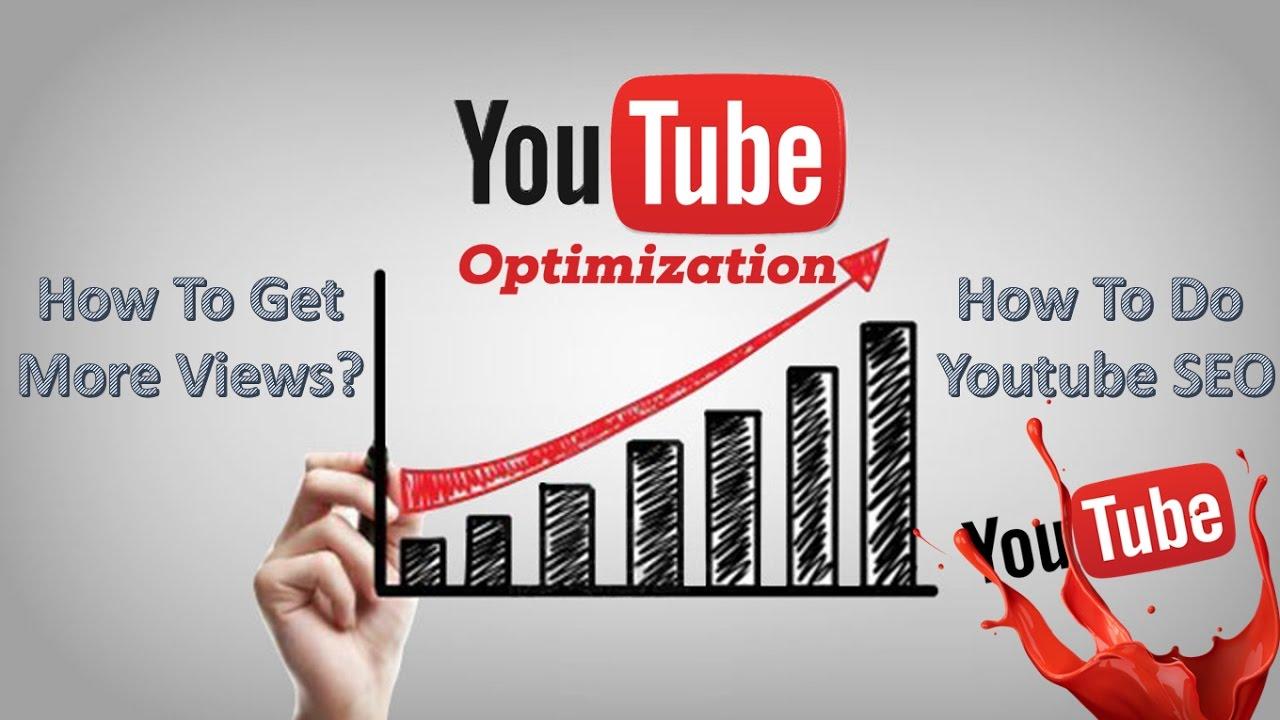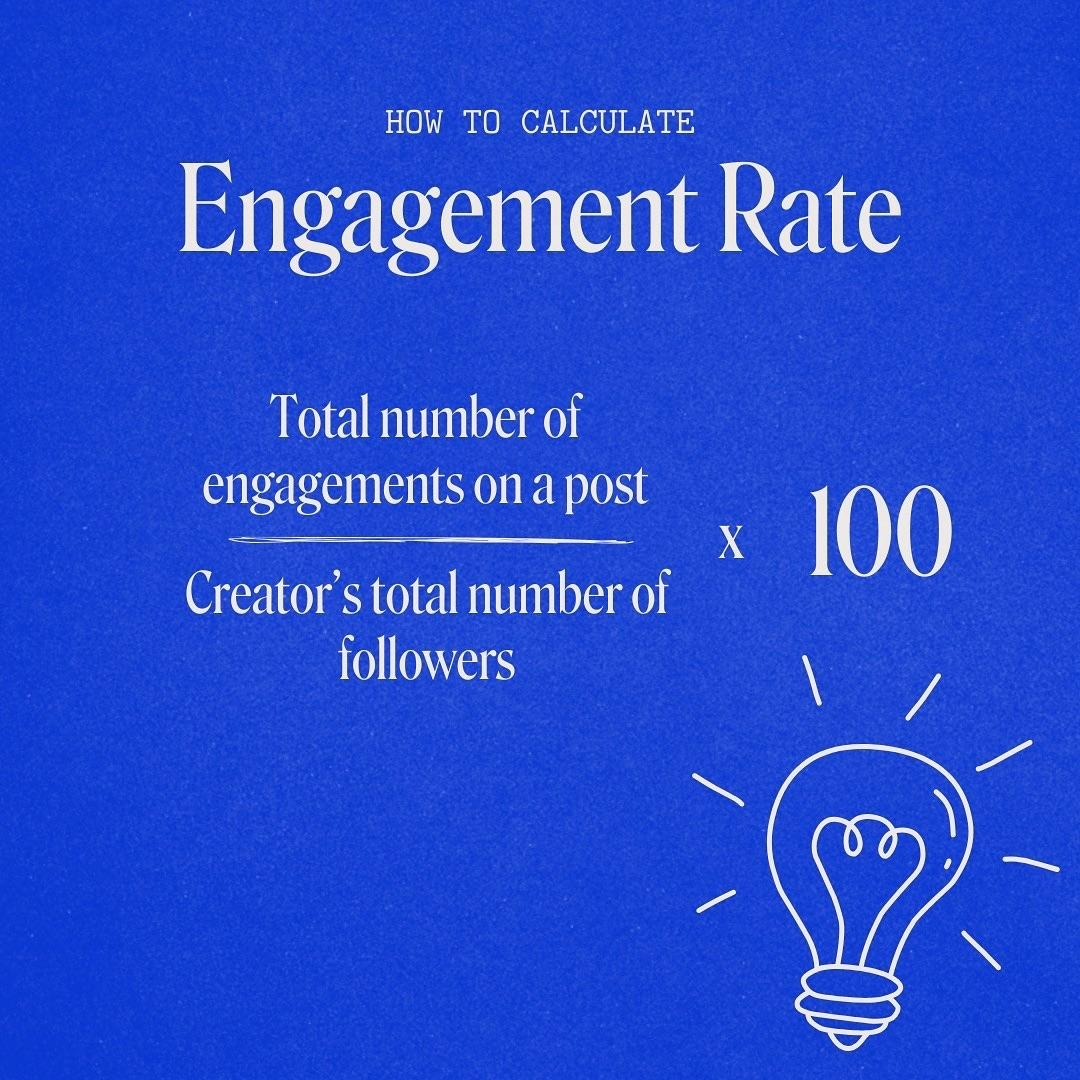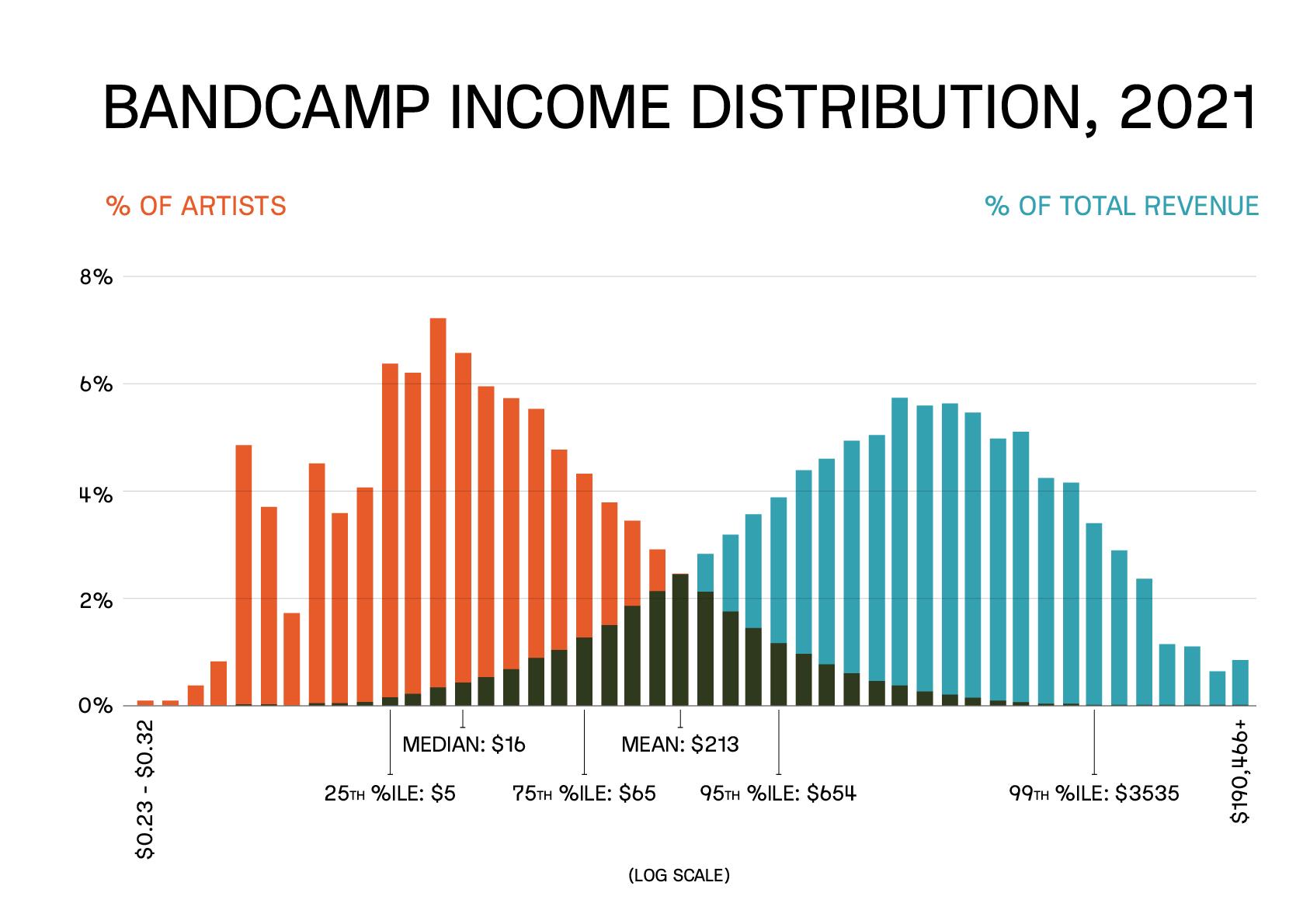
How to Make Money as an Artist: 25 Creative Ways (Off & Online)
Hey there, fellow creatives! If you’re reading this, you probably know that being an artist isn’t just about pouring your heart and soul onto a canvas or crafting the perfect melody. It’s also about figuring out how to turn that passion into a sustainable source of income. In today’s art world, where the digital landscape is ever-expanding, there are more opportunities than ever to monetize your talent—both online and offline!
Whether you’re a painter, a photographer, a graphic designer, or a musician, you might feel stuck in a cycle of creating for the love of it, while your bank account struggles to keep pace. But don’t worry! We’ve got you covered with 25 creative ways to make money as an artist that go beyond the traditional gallery shows and coffee shop gigs.
So, if you’re ready to turn your artistic flair into a profitable venture, join us as we explore innovative methods to market your work, build a following, and generate income. Let’s dive in and unleash the entrepreneurial spirit within you!
How to Transform Your Passion for Art into Profit
Transforming your love for art into a profitable venture requires a mix of creativity, business acumen, and a willingness to explore various avenues. Here are some effective strategies to turn your artistic passion into a money-making endeavor:
- Sell Your Artwork Online: Utilize platforms like Etsy, Saatchi Art, or your own website to showcase and sell your creations. High-quality images and compelling descriptions can attract buyers from around the globe.
- Teach Art Classes: Share your expertise by offering workshops, both in-person and online. Platforms such as Skillshare and Udemy can help you reach a wider audience.
- Create Merchandise: Turn your artwork into various products like prints, t-shirts, or phone cases. Print-on-demand services make it easy to produce and sell without upfront costs.
- Freelance Opportunities: Collaborate with businesses and individuals for commissioned pieces or graphic design work. Websites like Fiverr and Upwork can connect you with potential clients.
Another way to monetize your artistic skills is through social media. Building a strong presence on platforms like Instagram or Pinterest can attract a following and open doors for sponsored posts and collaborations. Engaging with your audience can also help in selling your artwork directly.
Consider starting a blog or YouTube channel dedicated to art. Share tutorials, behind-the-scenes looks, or your artistic journey. With time, you can monetize through ads, sponsorships, or affiliate marketing, creating another income stream.
Here’s a quick overview of additional income sources:
| Income Source | Description |
|---|---|
| Art Exhibitions | Showcase and sell your work at local galleries or art fairs. |
| Art Licensing | License your artwork to companies for use on products. |
| Art Grants & Scholarships | Apply for funding to support your art projects. |
| Collaborative Projects | Partner with other artists for joint exhibitions or products. |
Networking with other artists and industry professionals can also provide opportunities for collaborations and exposure. Attend art shows, workshops, or join online communities to make connections that could lead to profitable ventures.
Ultimately, the key to turning your passion into profit lies in persistence and innovation. Keep exploring different avenues, and don’t be afraid to think outside the box. The art world is vast, and there’s a market for every style and medium. Embrace the journey of discovering what works best for you.

Exploring the Power of Social Media for Artists
In today’s digital age, social media has evolved into a powerful tool for artists to showcase their work, connect with fans, and generate income. By leveraging these platforms effectively, you can not only enhance your visibility but also create sustainable revenue streams.
Build Your Brand: Establishing a personal brand is essential for any artist. Use platforms like Instagram, Facebook, and TikTok to share your artistic journey, behind-the-scenes content, and your unique creative process. This not only engages your audience but also cultivates a community around your work.
Utilize Visual Platforms: Visual-centric platforms like Instagram and Pinterest are particularly beneficial for artists. Post high-quality images of your artwork, create engaging stories, and use relevant hashtags to increase your discoverability. Engagement is key; responding to comments and messages helps build a loyal following.
Sell Directly through Social Media: Many platforms now offer integrated shopping features. For example, you can set up an Instagram shop that allows users to purchase your artwork directly from your profile. This seamless experience can lead to higher conversion rates and makes it easier for fans to support you.
Offer Exclusive Content: Consider creating a Patreon or similar subscription-based service where your followers can pay for exclusive content. This could include early access to new artwork, behind-the-scenes videos, or even personal art tutorials. Not only does this give your fans something special, but it also provides you with a steady income stream.
Engage with Collaborations: Partnering with other artists or brands can amplify your reach. Collaborations can range from joint projects to hosting giveaways. By tapping into each other’s audiences, you can gain new followers and potential customers. Plus, it can be a fun way to network and learn from others in your field.
Leverage User-Generated Content: Encourage your audience to share photos of your artwork displayed in their homes or their interpretations of your pieces. This not only promotes your work but also creates a sense of community. Share their posts on your profile; it shows appreciation and can further engage your followers.
Host Live Events: Utilize platforms like Instagram Live or Facebook Live to host art shows, Q&A sessions, or workshops. This real-time interaction not only showcases your expertise but also offers a personal connection with your audience. Consider charging for exclusive workshops or offering limited-edition artwork during these events.
| Social Media Platform | Best Use for Artists | Revenue Potential |
|---|---|---|
| Showcase artwork, engage with followers | High – direct sales, partnerships | |
| Community building, event promotion | Medium – groups, events | |
| TikTok | Creative short videos, viral content | Medium - sponsorships, merchandise |
| Inspiration boards, driving traffic | Medium – blog traffic, ad revenue |
By tapping into the vast capabilities of social media, artists can transform their passion into a profitable venture. Embrace the tools available, experiment with different strategies, and watch your artistic career flourish in the digital landscape.
Crafting Your Unique Brand Identity
When it comes to making a mark in the art world, having a distinct brand identity is crucial. Your brand is more than just a logo or a catchy name; it’s the essence of who you are as an artist. It tells your story, connects you with your audience, and differentiates you in a crowded marketplace.
First, consider what makes your art unique. Is it your style, your medium, or perhaps the themes you explore? Identify the core elements that set you apart. Reflect on your inspirations and experiences that inform your work. This self-discovery process will help you communicate your authenticity to your audience.
Next, think about the visual elements of your brand. Your color palette, typography, and overall aesthetic should resonate with your artistic voice. Create a mood board that encapsulates your vision. This can guide your decisions on everything from your website design to your social media presence. Consistency in these elements fosters recognition and trust with potential buyers.
Another vital aspect of your brand identity is your narrative. Storytelling is an incredibly powerful tool. Share your journey, the challenges you’ve overcome, and what drives you to create. Use your platforms—be it a blog, social media, or newsletters—to engage your audience with your story. Crafting this personal connection can transform casual viewers into loyal fans.
Don’t forget the importance of interaction. Engage with your audience through comments, live sessions, or Q&As. Responding to inquiries about your work or sharing insights into your creative process can deepen your relationship with your followers. Building a community around your art not only enhances your brand but can also lead to increased sales and opportunities.
leverage your brand identity across all platforms. Whether you’re selling art online, participating in exhibitions, or collaborating with other artists, ensure that your branding is cohesive. Use similar visuals, language, and themes to create a unified presence that resonates across multiple channels.
As you develop your brand, remember that it’s a living entity that can evolve. Stay open to feedback and adapt to the changing landscape while keeping your core values intact. Your brand identity should grow alongside you, reflecting your artistic journey and connecting authentically with your audience.
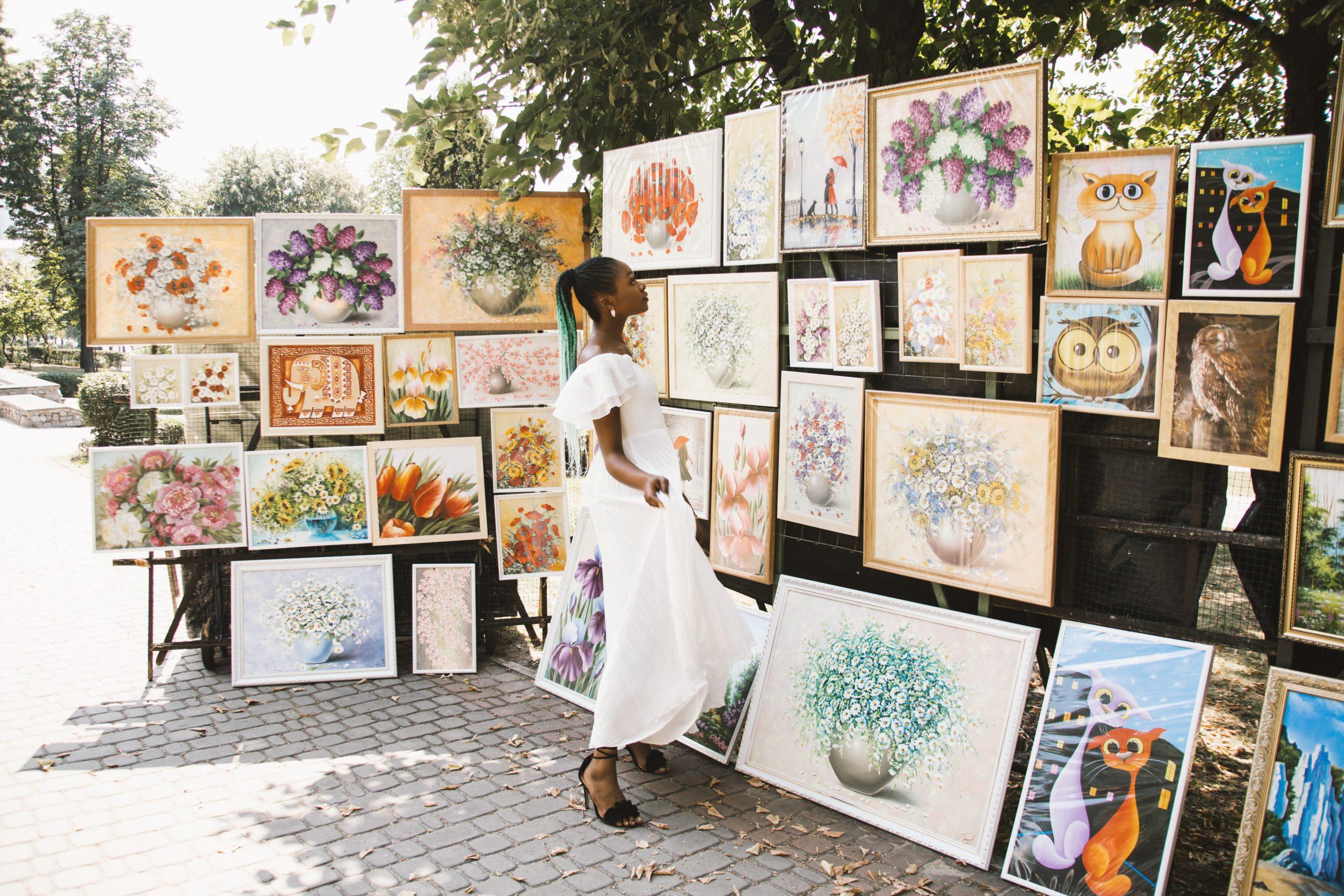
Selling Art Online: Platforms You Should Consider
In today’s digital age, selling art online has never been easier. There are numerous platforms tailored specifically for artists, each offering unique features that can help you reach a wider audience and maximize your sales potential. Whether you’re a painter, photographer, or digital artist, it’s essential to choose the right platform that aligns with your artistic vision and business goals.
Etsy is a go-to platform for many artists. It’s particularly effective for handmade, vintage, and craft items, attracting a community of buyers who appreciate unique creations. Setting up a shop is straightforward, and you can customize your listings with high-quality images and detailed descriptions. Plus, Etsy provides built-in traffic through its established marketplace, which can significantly boost your visibility.
Saatchi Art specializes in fine art and is a fantastic option for artists looking to sell original works and prints. The platform handles shipping and offers a range of pricing options, which can be a huge relief for those new to selling art. With a global reach, Saatchi Art connects you with collectors worldwide, making it a compelling choice for serious artists.
Artfinder is another platform dedicated to selling original art directly from artists to buyers. The site emphasizes authenticity and supports independent artists, making it a perfect space for unique creations. By creating a profile that showcases your artistic journey, you can build a loyal customer base while enjoying a supportive community.
Fine Art America is ideal for artists who want to sell prints of their work. The platform offers print-on-demand services, which means you don’t need to hold inventory. It’s a hassle-free way to monetize your existing artwork while providing buyers with high-quality prints without the overhead costs. You can also create a personalized storefront to reflect your brand.
Instagram isn’t just a social media platform; it has become a powerful tool for selling art. By posting compelling images of your work and engaging with followers, you can drive traffic to your website or online store. Utilize features like Instagram Shopping to tag products in your posts, allowing potential buyers to make purchases seamlessly.
To help you navigate these platforms, here’s a quick comparison of their key features:
| Platform | Best For | Fee Structure |
|---|---|---|
| Etsy | Handmade & Vintage Art | 5% transaction fee + listing fee |
| Saatchi Art | Fine Art & Prints | 35% commission on sales |
| Artfinder | Original Art | 30% commission |
| Fine Art America | Prints & Merchandise | No upfront fees; you set the prices |
Choosing the right platform can significantly impact your success in the online art marketplace. Consider factors such as your target audience, the type of art you create, and the level of flexibility you need in pricing and presentation. By maximizing your exposure across multiple platforms, you can create a robust online presence that not only showcases your art but also drives sales.
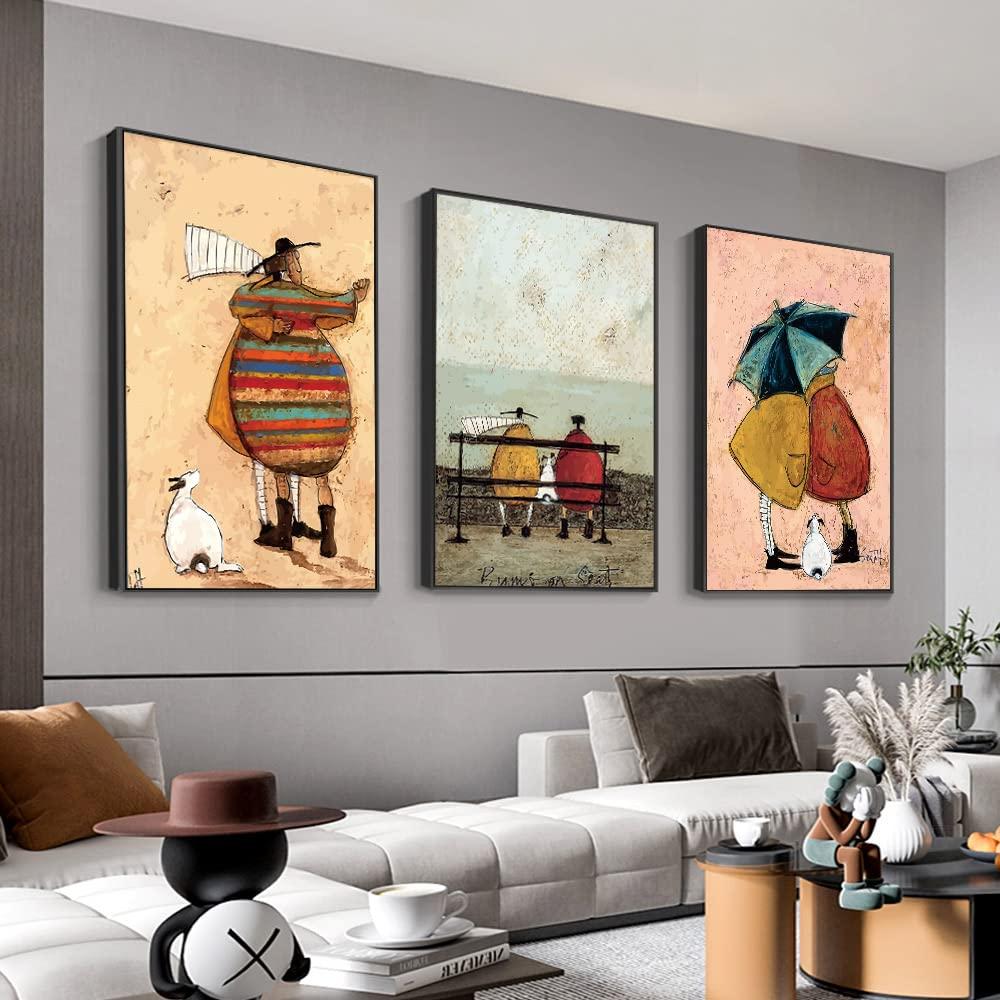
The Magic of Art Prints: Turning Originals into Multiple Income Streams
Art prints are a game changer for artists looking to expand their reach and income. By transforming original pieces into prints, you can tap into a wider audience without compromising the essence of your artistry. Here’s how you can leverage this magical medium to create multiple income streams.
First off, consider the versatility of art prints. They come in various forms, such as:
- Posters: Large-format prints that can brighten up any room.
- Framed Prints: Ready-to-hang pieces that offer a touch of elegance.
- Canvas Prints: These replicate the texture of your original artwork.
- Art Cards: Perfect for greetings, thank you notes, or small gifts.
Each type of print can cater to different markets and price points, allowing you to reach art enthusiasts at various levels. This diversification means more opportunities for sales and engagement with your audience.
Creating a quality art print requires some investment in both time and materials. Here are essential steps to ensure your prints are top-notch:
- High-Resolution Scans: Ensure your original artwork is captured in high resolution to maintain quality.
- Quality Printing Services: Partner with reputable printers who specialize in art prints.
- Proper Packaging: Invest in protective and professional packaging to enhance customer experience.
Once you have your prints ready, the next step is marketing. Utilize both online and offline channels to maximize exposure:
- Online Marketplaces: Platforms like Etsy and Redbubble allow you to sell prints easily.
- Social Media: Share your prints on Instagram and Pinterest to attract potential buyers.
- Art Shows and Fairs: Display prints at local art events to create a personal connection with buyers.
Another fantastic way to boost your income is through collaborations. Partner with businesses such as:
| Business Type | Collaboration Idea |
|---|---|
| Cafés | Display and sell prints on the walls. |
| Gift Shops | Include prints in their product offerings. |
| Interior Designers | Offer prints for staging homes or offices. |
With a proactive approach and creative thinking, art prints can become a significant source of revenue. Not only do they allow you to share your artistry with a broader audience, but they also enable you to maintain your artistic integrity while generating income. So, think outside the box and let your prints work for you!
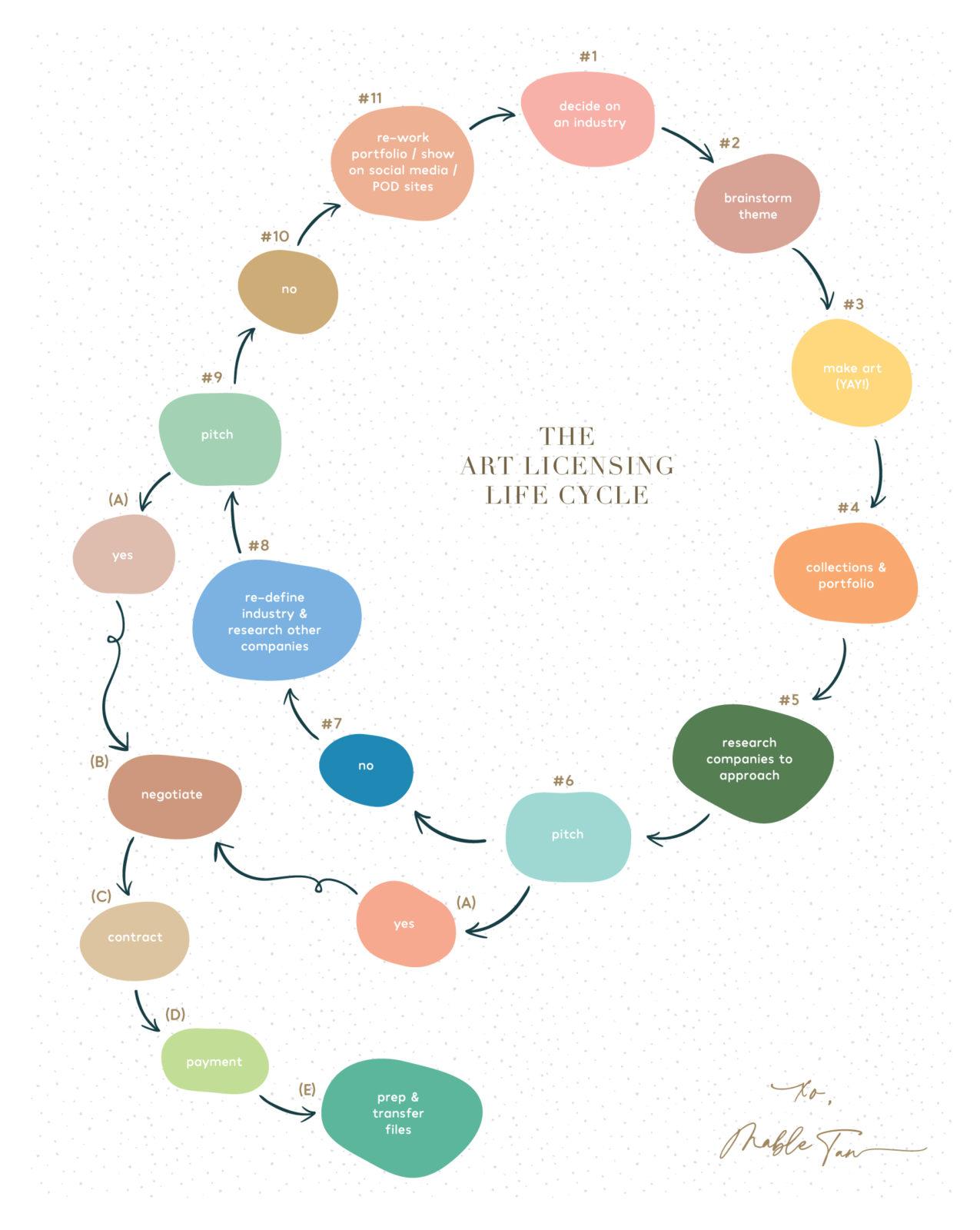
Diving into Art Licensing: Opportunities You Might Not Have Considered
Diving into the world of art licensing opens up a plethora of opportunities for artists to monetize their work in ways they may not have considered before. Rather than just selling original pieces or prints, licensing enables you to share your artwork across various platforms while retaining ownership. Here’s how you can tap into this lucrative avenue.
Understanding Art Licensing
At its core, art licensing is a mutually beneficial agreement between the artist and the licensee. Artists allow companies to use their artwork on products, advertising, or media in exchange for royalties or a flat fee. This not only amplifies your reach but also provides a steady income stream. Here are some key aspects to keep in mind:
- Rights and Ownership: Always clarify the rights you’re granting. You can license your work for specific uses, such as for a limited time or a particular product line.
- Royalty Structures: Understand how you will be compensated, whether through royalties based on sales or an upfront fee.
- Market Trends: Stay informed about what types of artwork are in demand across different industries.
Potential Sectors for Licensing
The beauty of art licensing is its versatility. Your artwork can transcend its original form and find a home in various sectors. Consider the following areas:
- Home Décor: From wall art to textiles, your designs can adorn everyday items.
- Fashion: Collaborate with brands to feature your art on clothing, bags, or accessories.
- Stationery and Gifts: Greeting cards, calendars, and other gift items are always in demand and can feature your unique designs.
Creating a Portfolio for Licensing
Your portfolio is your calling card in the licensing world. Focus on creating a cohesive body of work that showcases your unique style and versatility. Here are some tips to develop an engaging portfolio:
- Curate Wisely: Choose pieces that represent your best work and align with current market trends.
- Mock-ups: Present your artwork as it would appear on products, helping potential licensees visualize its application.
- Digital Presence: Maintain a professional website or online portfolio that is easily navigable and showcases your licensing capabilities.
Finding Licensing Opportunities
Networking is crucial in the licensing industry. Here are some effective strategies to connect with potential partners:
- Industry Events: Attend trade shows, art fairs, and licensing expos to meet potential licensees and learn about market trends.
- Online Platforms: Websites like ArtLicensing.com and AgencyAccess.com can help you find companies looking for artists to collaborate with.
- Social Media: Utilize platforms like Instagram and Pinterest to showcase your work and engage with brands directly.
Maximizing Your Licensing Income
Once you start licensing your work, consider strategies to optimize your earnings:
- Diversify Your Portfolio: License different types of artwork across various industries to spread risk and increase income sources.
- Negotiate Effectively: Don’t be afraid to negotiate terms that reflect the value of your work and your experience.
- Monitor Sales: Keep track of which products are selling well and adapt your portfolio accordingly to meet demand.
Art licensing is a fantastic opportunity for artists looking to expand their revenue streams. By understanding the ins and outs of licensing, connecting with the right partners, and maximizing your visibility, you can truly make your art work for you.
Hosting Workshops and Classes: Share Your Skills and Earn
If you’re an artist passionate about sharing your craft, hosting workshops and classes is a fantastic way to connect with others while earning money. Not only do you get to impart your knowledge, but you also foster a community of creativity and collaboration. Let’s explore how to make the most of this opportunity!
First, think about what unique skills you possess that others might want to learn. Here are some ideas to consider for your workshops:
- Beginner’s Drawing Classes: Teach the fundamentals of drawing, from basic shapes to shading techniques.
- Watercolor Techniques: Share your expertise in creating beautifully blended watercolor paintings.
- Printmaking Workshops: Guide participants through the process of making their own prints and art pieces.
- Creative Journaling: Help people express their thoughts and ideas through artistic journaling techniques.
Once you’ve decided on your workshop theme, it’s time to get the word out! Use social media platforms to showcase your art and promote your classes. Engaging posts featuring your work or snippets from previous workshops can attract potential participants. Don’t forget to include a call-to-action that encourages followers to sign up!
When it comes to logistics, you have plenty of options. If you prefer in-person classes, look for community centers, local galleries, or even your own studio. For those who favor online instruction, platforms like Zoom or Teachable can help you connect with a broader audience. Here’s what to think about for each format:
| Class Type | Format | Benefits |
|---|---|---|
| In-Person Workshops | Physical Space | Hands-on guidance, immediate feedback |
| Online Classes | Virtual Platform | Wider reach, flexible scheduling |
Pricing your workshops appropriately is crucial. Research similar offerings in your area or online to gauge what participants might be willing to pay. Consider different pricing tiers based on class length, materials provided, and whether the session is beginner or advanced. Here’s a simple pricing model to consider:
| Workshop Length | Price Range |
|---|---|
| 1 Hour Session | $20 – $30 |
| 2 Hour Session | $40 – $60 |
| Full Day Workshop | $100 - $150 |
Feedback from participants can be a goldmine for improving your workshops. After each session, consider sending a quick survey or simply ask for comments. This not only helps you make adjustments but also shows that you value their opinions. Engaging with your audience fosters loyalty and encourages them to return for more classes.
Lastly, collaborate with fellow artists or local businesses. Joint workshops can enhance the learning experience and introduce you to each other’s followers. Teaming up can also ease the burden of marketing and logistics, making the process more enjoyable and less daunting.

Collaborating with Other Creatives for Mutual Benefit
In the ever-evolving landscape of the art world, collaboration with other creatives can unlock doors to numerous opportunities and avenues for income. By pooling talents and resources, artists can create unique products, services, and experiences that resonate with a wider audience. Here are some effective strategies to consider when looking to collaborate:
- Joint Workshops or Classes: Partner with fellow artists or creatives to host workshops. This not only diversifies the skills being taught but also attracts a broader audience, allowing you to split the costs and profits.
- Cross-Promotion: Utilize each other’s platforms to promote your work. You can feature each other’s projects on social media or websites, increasing visibility for both parties and boosting sales.
- Shared Projects: Consider collaborating on a piece of art or a project that marries your styles. This fusion can create something entirely unique that might appeal to both your audiences.
- Creative Collectives: Join or form a creative collective. By working together in a group, you can share resources, host events, and offer collective services that could reach a wider market.
When brainstorming collaborative efforts, keep communication open and clear. Set mutual goals and expectations to ensure a positive experience for everyone involved. It’s important to establish roles and responsibilities early on to avoid any potential misunderstandings later. Here’s a simple table that outlines key elements to consider when collaborating:
| Element | Description |
|---|---|
| Vision | Align on your creative vision and what you hope to achieve. |
| Roles | Define who does what to prevent overlap and confusion. |
| Revenue Sharing | Decide how profits will be split beforehand. |
| Promotion | Create a plan for marketing the collaboration. |
Collaborating with other artists can also lead to networking opportunities that could be beneficial in the long run. Meeting new people in your field exposes you to different styles and techniques, enhancing your own skill set. Moreover, these connections can lead to future projects or referrals that keep your income flowing.
don’t forget the importance of diversity in collaboration. Working with artists from different backgrounds or disciplines can bring fresh perspectives and ideas to the table. This diversity not only enriches your work but can also attract a broader clientele who are curious about innovative, cross-genre art forms. Embrace the synergy, and watch your artistic endeavors flourish!

Building a Strong Portfolio to Attract Clients
Creating a compelling portfolio is essential for any artist looking to attract clients. Your portfolio is not just a collection of your work; it’s a reflection of your unique style, skills, and the value you bring to potential clients. Here are some key elements to consider when building yours:
- Showcase Diverse Styles: Include a variety of works that highlight different techniques and styles. This demonstrates your versatility and ability to cater to various client needs.
- Quality Over Quantity: It’s better to have a smaller selection of outstanding pieces than a large number of mediocre ones. Focus on what best represents your talent.
- Personal Projects: Don’t hesitate to include personal projects that ignite your passion. These can often resonate more with clients and show your creativity outside of commissioned work.
- Professional Presentation: Ensure your portfolio is well-organized, visually appealing, and easy to navigate. Use high-quality images and consider a cohesive design that mirrors your artistic brand.
- Client Testimonials: Incorporate feedback from past clients to build credibility. Positive reviews can greatly influence potential clients’ perceptions of your work.
Additionally, consider the platforms you choose to showcase your portfolio. Here are some options:
- Personal Website: A dedicated website serves as a central hub for your work and allows you to customize the user experience.
- Social Media: Utilize platforms like Instagram, Pinterest, and Behance to share your work and engage with a broader audience.
- Online Marketplaces: Websites like Etsy or Saatchi Art can help you reach potential buyers while also serving as a portfolio.
Remember, your portfolio is a living document. Regularly update it with new projects, and remove older works that no longer represent your current style or standards. Keeping your portfolio fresh not only showcases your growth as an artist but also helps keep clients engaged.
Lastly, it’s essential to tell your story. Include an artist statement or bio that connects your work to your personal experiences and artistic journey. This narrative adds depth to your portfolio, allowing clients to see the heart behind your art.

Leveraging Crowdfunding for Your Artistic Projects
Crowdfunding has revolutionized the way artists finance their projects. No longer reliant solely on traditional grants or loans, creative individuals can now turn to their audience for support. But how do you effectively leverage these platforms to bring your artistic vision to life?
First off, choose the right platform that aligns with your artistic goals. Platforms like Kickstarter, Indiegogo, and Patreon each offer unique features suited for different types of projects. For example, Kickstarter is great for one-off projects, while Patreon allows for ongoing patronage. Take the time to research and select the one that best fits your needs.
Next, craft a compelling story around your project. People don’t just contribute to projects; they invest in stories. Share your journey, your passion, and the impact of your work. Use engaging visuals and videos to convey your message. A well-produced video can capture attention and convey the essence of your project in a way that text alone cannot.
It’s also vital to set realistic funding goals. Consider the costs involved in your project and how much you truly need to complete it. Break down your budget clearly to show potential backers where their money will go. A transparent budget fosters trust and encourages contributions. Here’s a simple example:
| Item | Cost |
|---|---|
| Materials | $500 |
| Marketing | $300 |
| Production | $700 |
| Total | $1500 |
Reward tiers are another key element to consider. Offer your backers exclusive perks based on their contribution levels. From digital downloads to personalized artwork, rewards can motivate people to pledge more. Ensure that the rewards reflect the effort and value of your work, and make them enticing to your supporters.
Don’t forget about the power of community. Engage with your audience before, during, and after your campaign. Utilize social media platforms, email newsletters, and personal networks to spread the word. Regular updates on your progress keep backers excited and informed, reinforcing their investment in your project.
once your campaign is successfully funded, maintain the momentum. Share the journey of bringing your project to life with your backers. Not only does this build trust, but it also paves the way for future projects. Satisfied backers are more likely to support you again, turning one-time supporters into lifelong fans.
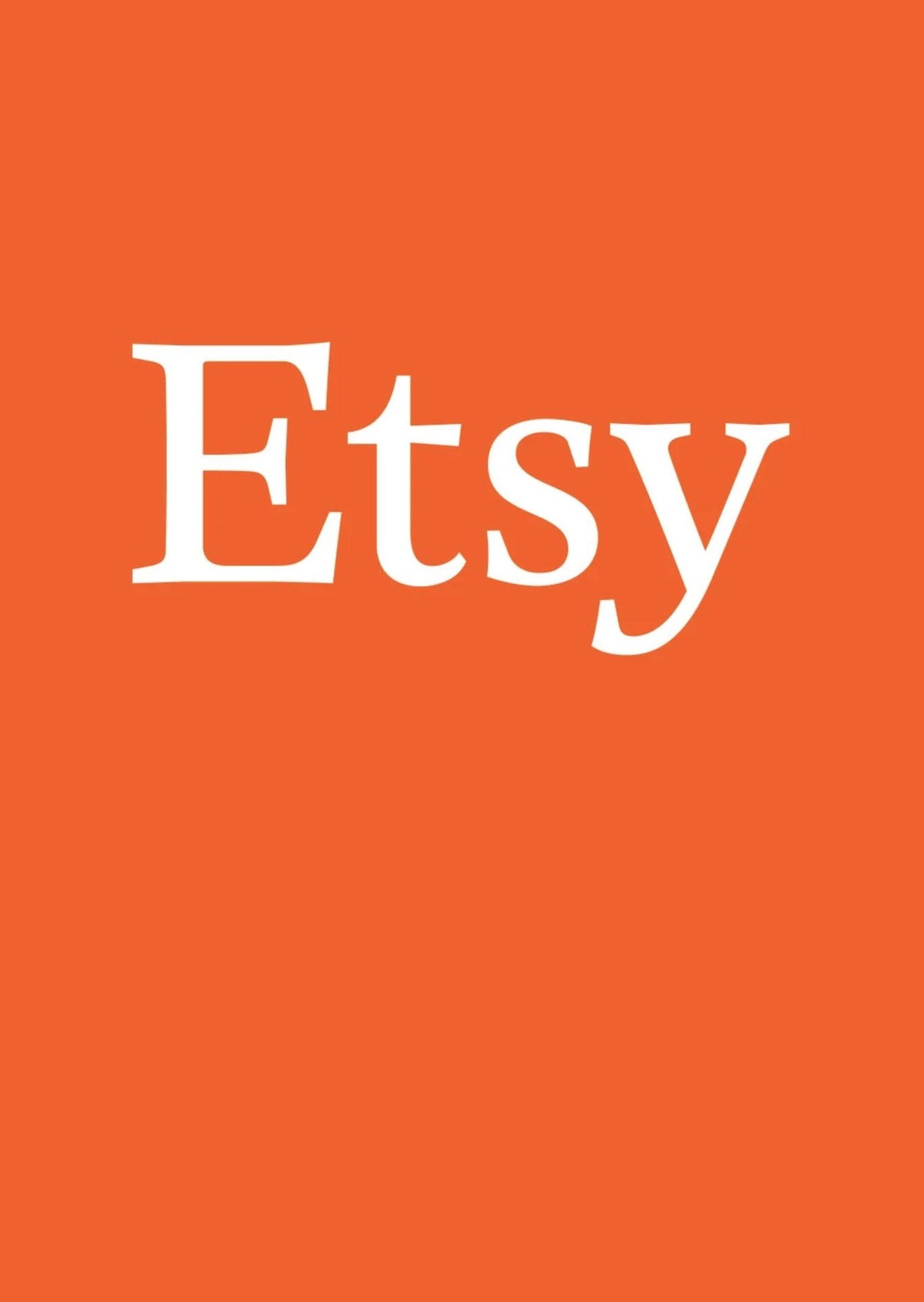
Utilizing Etsy: Tips for Success on This Popular Marketplace
If you’re an artist looking to tap into a vibrant community and sell your creations, Etsy is a fantastic platform for you. With millions of buyers searching for unique handmade items, it’s important to stand out from the crowd. Here are some essential tips to help you make the most out of your Etsy shop.
1. Create a Cohesive Brand
Establishing a strong brand identity is key. Make sure your shop name, logo, and product presentation resonate with your artistic style. Your branding should tell a story and attract the right audience. Consider:
- Designing a memorable logo.
- Choosing a color palette that reflects your art.
- Creating consistent listings with similar formats.
2. Optimize Your Listings
SEO is vital for visibility on Etsy. Use relevant keywords in your product titles, descriptions, and tags. Think about what potential customers might be searching for. For example:
| Keyword | Application |
|---|---|
| Handmade Jewelry | Use in the title and first few sentences of the description. |
| Custom Portraits | Tag your listings and include in the description. |
3. High-Quality Photography
Your product images can make or break a sale. Invest time in taking high-quality photos that showcase your work from multiple angles. Natural light is your friend! Consider the following:
- Use a simple background to keep the focus on your art.
- Include lifestyle images to show your product in use.
- Consider a short video to display your art process or finished products.
4. Engage with Your Customers
Building relationships with your buyers is vital for repeat sales. Respond to messages promptly and offer personalized touches, such as thank-you notes in orders. Encourage feedback and engage with your audience on social media. It helps to:
- Share behind-the-scenes content.
- Host giveaways to build excitement.
- Encourage customers to share their purchases on social media.
5. Promote Beyond Etsy
Don’t rely solely on Etsy for traffic. Leverage other platforms to drive customers to your shop. Consider:
- Utilizing Instagram and Pinterest for visual promotion.
- Starting a blog to share your art journey and techniques.
- Collaborating with influencers in your niche.

Getting Into the Gallery Scene: Networking and Exposure
Diving into the gallery scene is more than just hanging your artwork on a wall; it’s about building relationships and showcasing your talent to potential buyers and art lovers. Networking is a crucial aspect of this journey. Start by attending local art events, openings, and exhibitions. Engage with fellow artists, curators, and collectors. Remember, every conversation is a potential opportunity!
Consider joining artist groups and associations. These communities often host events, critiques, and workshops that can enhance your skills and expand your circle. Online platforms like social media can also be invaluable. Share your work on Instagram, Twitter, or dedicated art forums. Use relevant hashtags to reach a broader audience and connect with other artists and potential buyers.
When you attend an event, don’t just blend into the background. Approach others with confidence. Have a few conversation starters ready, like discussing your latest project or asking about their work. Building rapport is key. You might even consider creating business cards to share your contact information and social media handles.
Collaborating with other artists can also elevate your exposure. Whether it’s a joint exhibition, an art installation, or a community project, working together can help you tap into each other’s audiences. Plus, it’s a fun way to gain new perspectives on your work.
Don’t overlook the power of online galleries. Websites like Saatchi Art, Artfinder, or even your own portfolio site can help you reach a global audience. Make sure to curate your online presence by showcasing high-quality images of your work, providing engaging descriptions, and telling the story behind each piece.
| Networking Opportunities | Benefits |
|---|---|
| Art Openings | Meet collectors and other artists |
| Workshops | Enhance skills and build connections |
| Online Platforms | Reach a larger audience |
| Artist Collaborations | Share resources and audiences |
Lastly, always follow up with the people you meet. A simple thank-you email or a message expressing your enjoyment of their work can go a long way. Stay in touch, share updates about your projects, and don’t hesitate to reach out for collaborative opportunities. Building genuine relationships is what will sustain your presence in the gallery scene.
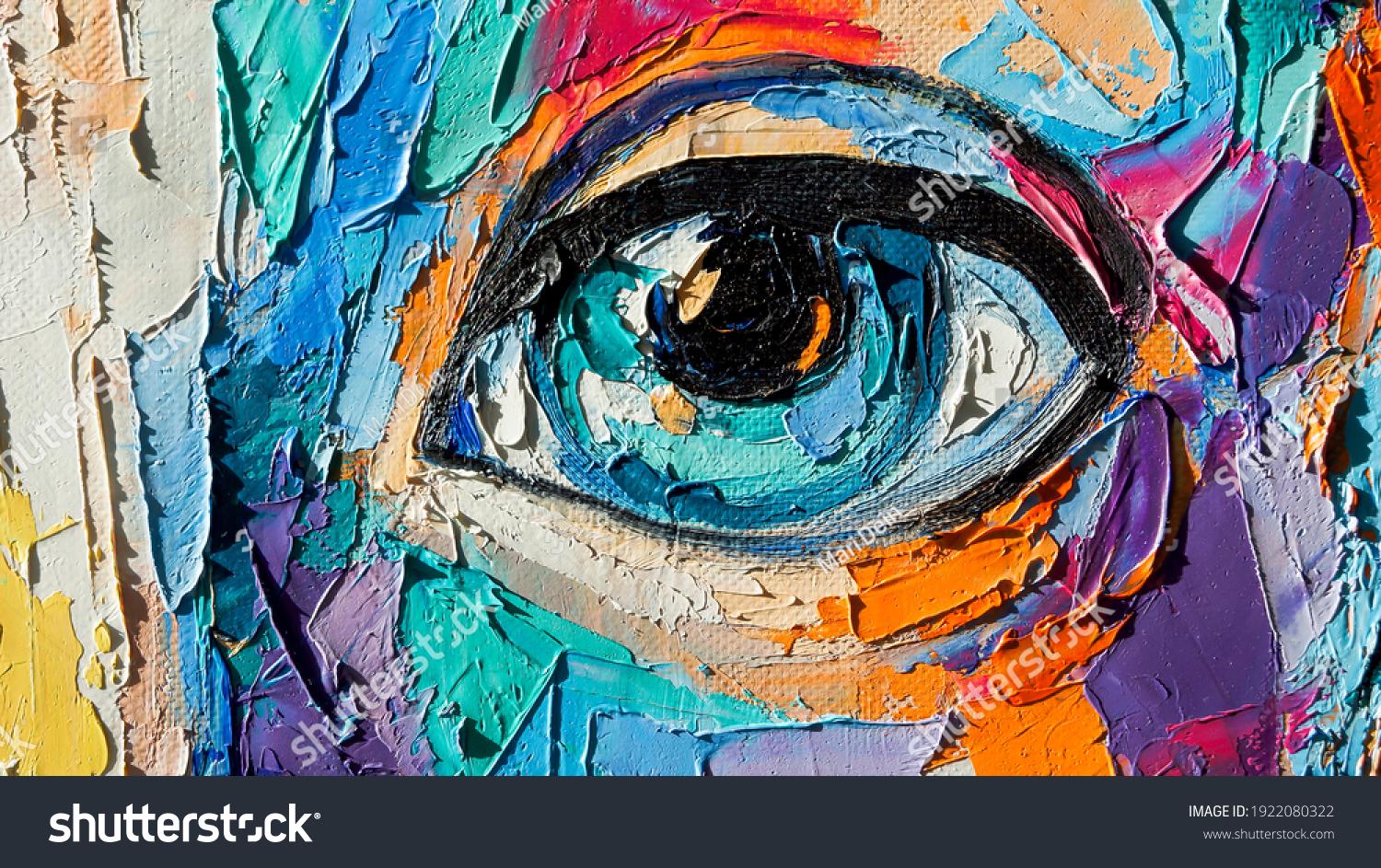
Creating Passive Income with Stock Art and Digital Downloads
As an artist, you possess a treasure trove of creativity that can be transformed into a steady stream of passive income. One of the most effective ways to achieve this is through stock art and digital downloads. By leveraging your unique style and skills, you can create a portfolio that not only showcases your talent but also provides you with ongoing revenue.
First, consider the types of digital products you can create. Here are some ideas to get you started:
- Stock Photography: Capture stunning images that can be sold to bloggers, marketers, and businesses.
- Illustrations: Develop unique illustrations that can be converted into prints or downloadable files.
- Printable Art: Design artwork that customers can print at home, including wall art, planners, or greeting cards.
- Clip Art: Create graphic elements that can be used in various design projects.
- Fonts and Graphics: If you have a knack for typography or graphic design, consider creating and selling your own fonts or graphic packs.
To maximize your reach and sales, it’s important to choose the right platforms for distribution. Here are some popular options:
- Stock Photography Websites: Sites like Shutterstock, Adobe Stock, and Getty Images allow you to upload your images and earn a commission every time someone downloads them.
- Art Marketplaces: Platforms like Etsy and Creative Market are perfect for selling digital art directly to consumers.
- Your Own Website: Consider building your own site to sell your art. This gives you full control over pricing and branding.
A key aspect of success in this arena is effective marketing. Simply uploading your artwork isn’t enough. Here are some strategies to get your work noticed:
- Social Media Promotion: Use platforms like Instagram and Pinterest to showcase your work, engage with followers, and drive traffic to your shop.
- SEO Optimization: Optimize your product listings with relevant keywords to improve visibility in search results.
- Email Marketing: Build a mailing list to keep your audience updated on new releases, promotions, and exclusive offers.
Consider creating bundles or subscription services that offer customers value while providing you with consistent income. For example, you could offer a monthly subscription for exclusive digital downloads or discounted bundles of stock images. This not only encourages repeat customers but also stabilizes your income flow.
keep track of your sales and customer feedback. Understanding what types of art sell best will help you refine your offerings and create products that resonate with your audience. Use this data to adjust your marketing strategies and improve your future creations.
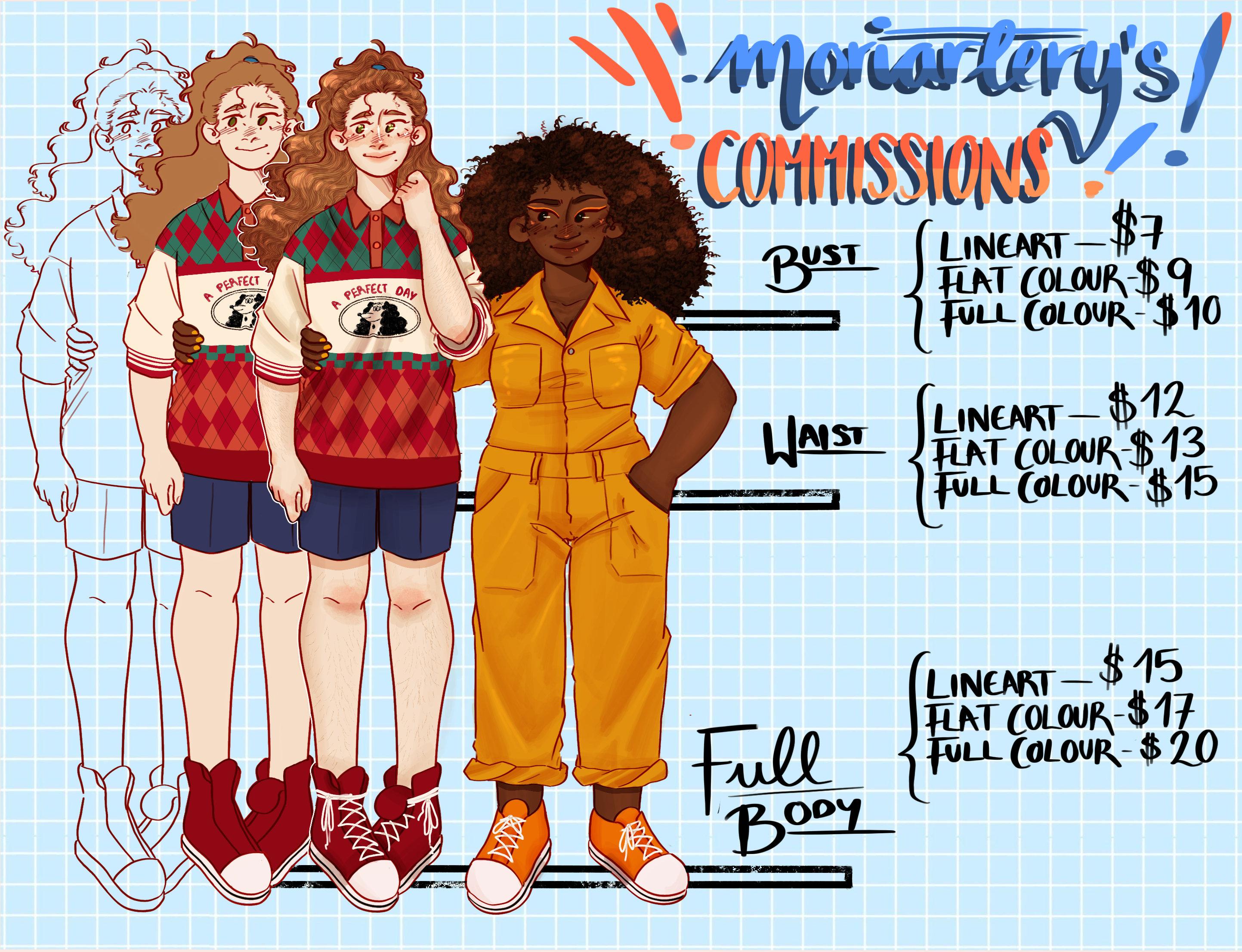
Navigating the World of Art Commissions: How to Price Your Work
Pricing your art commissions can often feel like navigating a labyrinth. It’s essential to strike a balance between valuing your work and remaining competitive in the market. Here are some strategies to help you determine the right price for your art commissions.
Understand Your Worth: Start by assessing the value of your artistic skills and experience. Consider factors such as:
- Your artistic medium and technique
- Previous experience and portfolio quality
- Time required to complete the commission
- Materials costs
Creating a personal valuation grid can help clarify your worth. Here’s a simple table to help you get started:
| Factor | Value Scale (1-10) | Comments |
|---|---|---|
| Skill Level | 8 | Advanced techniques mastered |
| Market Demand | 7 | Consistent inquiries for commissions |
| Material Costs | 5 | Quality materials used |
Research Market Prices: Investigate what other artists in your niche are charging for similar work. This can provide a benchmark for your pricing. Look at:
- Local art shows and galleries
- Online marketplaces like Etsy or ArtStation
- Social media platforms where artists share their commissions
Consider the Complexity: Every commission is unique, and the complexity of the project should reflect in your pricing. Think about:
- Size of the artwork
- Level of detail required
- Number of revisions included
A project that involves intricate details and numerous revisions should be priced higher to account for the extra time and effort involved.
Set Clear Terms: Once you’ve determined a price, communicate clearly with your clients about what that price covers. Having a detailed agreement helps manage expectations and protects both parties. Include:
- Scope of work
- Payment terms (deposits, installments, completion fees)
- Delivery timelines
Don’t Undervalue Yourself: Many artists struggle with pricing due to fear of losing potential clients. Remember, your art is valuable, and pricing it properly ensures you can sustain your creative business. If you’re confident in your pricing, clients are more likely to perceive your work as high-quality.
By applying these strategies, you’ll not only enhance your ability to price commissions effectively but also boost your confidence as an artist. Pricing can be dynamic, so don’t hesitate to adjust as you grow and gain more experience in the field.
Frequently Asked Questions (FAQ)
Q&A: How to Make Money as an Artist: 25 Creative Ways (Off & Online)
Q1: What are some traditional ways artists can make money?
A1: Great question! Traditional methods include selling original artwork, prints, and merchandise at galleries or art fairs. You can also take on commissioned work, where clients pay you to create custom pieces. Additionally, teaching art classes or workshops can be a rewarding way to share your skills while earning income.
Q2: Are there effective online platforms where artists can sell their work?
A2: Absolutely! Websites like Etsy, Redbubble, and Society6 are fantastic for selling prints and merchandise. You can also create your own website to showcase and sell your art directly. Don’t forget social media platforms like Instagram and Facebook—many artists successfully sell their work by showcasing it to their followers.
Q3: How can I monetize my art skills beyond selling physical products?
A3: There are numerous options! Consider creating online courses or tutorials to teach others your artistic techniques. You can also offer digital downloads, such as stock illustrations or templates. Plus, don’t underestimate the power of affiliate marketing or joining creative communities that pay for content contributions.
Q4: Is it worth selling art on social media?
A4: Definitely! Social media not only helps you reach a broader audience but also allows you to engage with your followers, building a loyal fanbase. Platforms like Instagram and TikTok are visual-centric, making them perfect for showcasing your art and driving sales. Just remember to be consistent and authentic in your posts!
Q5: How can I leverage my existing network to make money?
A5: Your network can be a goldmine! Share your art with friends, family, and acquaintances—they might know someone who’s looking to buy or commission work. Attend local art shows, join art groups, and participate in community events to meet potential clients and collaborators. Word of mouth is powerful!
Q6: What are some creative ways to diversify my income as an artist?
A6: Diversifying your income is key! In addition to selling art, you can explore licensing your artwork for products like home decor, clothing, or stationery. Consider creating a Patreon page where fans can support you in exchange for exclusive content. You could also collaborate with businesses or other artists for unique projects.
Q7: Do I need a large following to start making money as an artist?
A7: Not at all! While a large following can help, it’s not a requirement to start making money. Focus on creating quality work, building relationships, and engaging with your audience. Start small, and as you grow your skills and network, your income potential will increase. Remember, every successful artist started somewhere!
Q8: What’s the best advice for artists just starting to monetize their work?
A8: The most important thing is to stay true to your artistic vision while being open to new opportunities. Experiment with different methods of selling and marketing your work. Don’t be afraid to ask for feedback and learn from your experiences. Persistence is key—keep honing your craft and exploring fresh avenues, and you’ll find success!
Q9: How can I ensure my pricing reflects the value of my art?
A9: Pricing your art can be challenging, but it’s essential to consider factors like the cost of materials, your time, and market demand. Research similar artists and their pricing to find a competitive yet fair price point. Don’t undervalue your work—remember, your unique perspective and creativity are what make your art special!
Q10: Is making money as an artist really possible?
A10: Absolutely! Many artists successfully earn a living through their creativity. It requires dedication, strategic planning, and a willingness to adapt, but with the right mindset and approach, you can turn your passion into profit. So, get out there, explore those 25 creative ways, and start making your artistic dreams a reality!
Insights and Conclusions
As we wrap up our exploration of the 25 creative ways to make money as an artist, it’s clear that the canvas of opportunity is vast and vibrant. Whether you’re just starting out or looking to elevate your existing art career, remember that every brushstroke—every effort you make—can lead to success.
Don’t hesitate to experiment with different avenues, from selling your work online to hosting workshops or collaborating with other creatives. The digital age offers countless platforms to showcase your unique voice and vision, so embrace the possibilities.
Above all, stay true to your artistic passion. The journey may be filled with challenges, but with persistence and creativity, you can turn your art into a sustainable income. So go ahead, take that leap, and let your creativity shine! The world is waiting to see what you have to offer. Happy creating!




